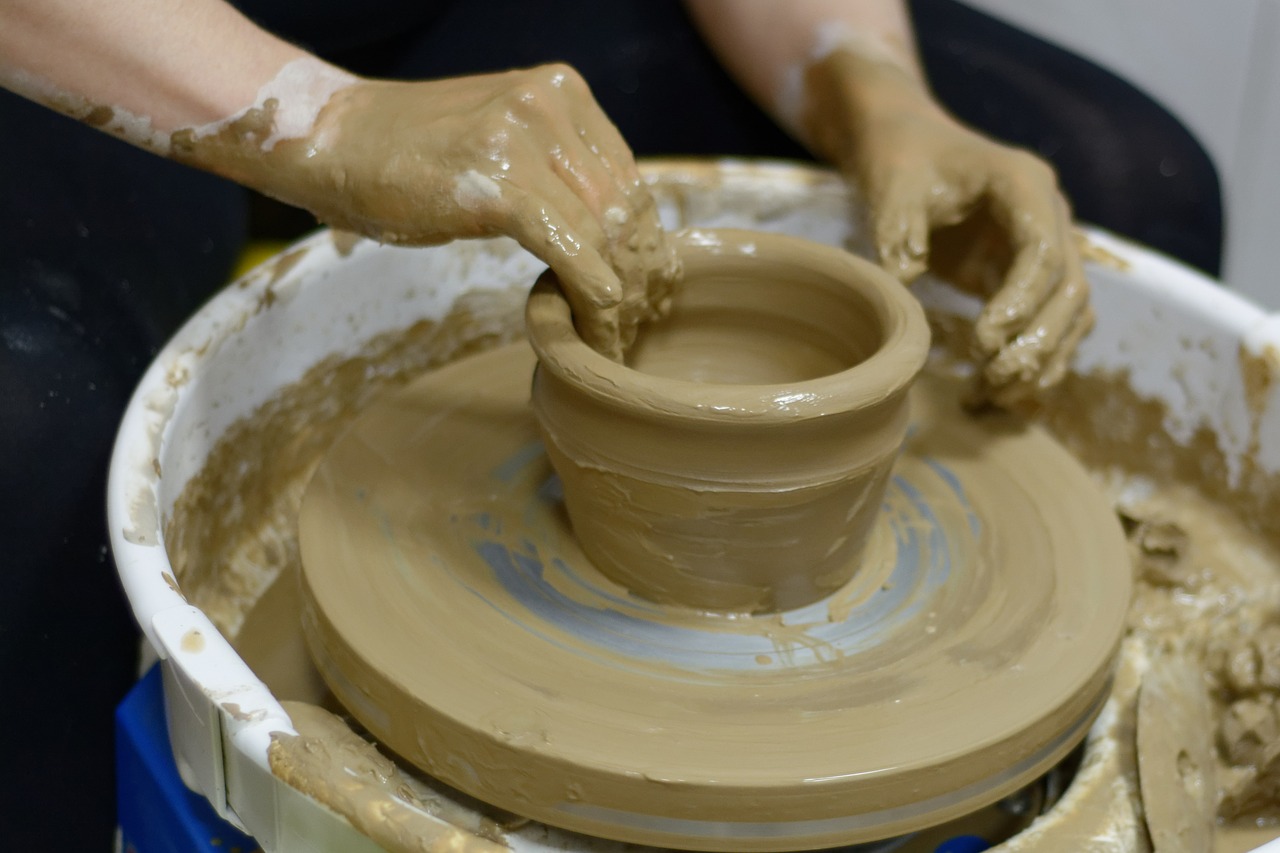As one of Uzbekistan’s oldest forms of applied decorative arts, ceramics hold a special place in Uzbek cultural heritage. And while beautiful ceramic pieces have been made for centuries by artists all over the country, the vibrant heart of ceramics production in Uzbekistan is undoubtedly Rishtan, a historic small town in the Ferghana Valley not far from the border of Kyrgyzstan. Read on to learn some amazing facts about this hub of artistry and the famous ceramics produced there.
Different legends exist about how ceramics first began in Rishtan.
Given that the art form has existed for hundreds of years, it’s not surprising that the origins of ceramics production in Rishtan are shrouded in mystery. Some scholars say that Rishtan artisans initially began making ceramics a thousand years ago. Others say the art form only dates back 500 years. One of the most popular tales credits the 14th century emperor Timur with sparking Rishtan’s “ceramics craze.” According to legend, Timur loved the exquisite white and blue Chinese porcelain that was one of the most valued goods to be traded along the Silk Road. In an attempt to replicate these beautiful pieces at home in Uzbekistan, Timur reportedly sent several ceramics masters to Rishtan with the mission of recreating the Chinese ceramics manufacturing process. While their attempts to do so were unsuccessful, these artisans ended up creating their own unique form of ceramic arts using regional clay and minerals.
Rishtan’s excellent clay is an important reason for the success of its ceramics.
Any area that is a historic hub for pottery and ceramics making must necessarily be home to high-quality clay, and Rishtan is no exception. The town’s unique reddish-yellow clay is found all over the region. Layers of clay are found in deposits 1 to 1.5 meters underground, meaning that it is both plentiful and relatively accessible. In addition, the clay is of such high quality that it requires little preparatory cleaning before it can be used (unlike the clay in many other regions of Uzbekistan, which not only needs a great deal of refinement before use, but also often requires the addition of other types of clay). Rishtan’s potters also extract dyes and minerals from the surrounding soil to color and paint the finished porcelain items.
Rishtan ceramics use a distinctive glaze.
Ceramics made in Rishtan are famous for their special, soft blue-green luster that comes from the use of a unique glaze called “ishkor.” The glaze is made by mixing the ashes of ishkor, a type of desert plant, with crushed quartz. Interestingly, the ishkor plant can only be harvested in late September, which makes the glaze derived from it even more distinctive and valuable. (Some experts speculate that the development of the ishkor glaze resulted from attempts to copy the blue hues of the aforementioned Chinese porcelain.)
Blue is the traditional color of Rishtan ceramics.
While other colors are used sparingly, shades of blue dominate most traditional Rishtan ceramics. Practically speaking, this is due to the prominent use of the ishkor glaze, as well as other pigments. Poetically speaking, blue and turquoise are the colors of choice because, according to ancient belief, they symbolize the happiness evoked by pure water and cloudless skies.
The art of ceramics isn’t confined to dishware.
While dishes for the home—including jugs, bowls, and platters—are some of the most common ceramic items made by Rishtan potters, the scope of their artistry isn’t confined to household crockery. One of the most breathtaking and unique examples of Rishtan ceramics is Khudoyar Khan’s palace in the city of Kokand: Rishtan potters made the thousands of blue, yellow, green, and red tiles that adorn the facade of this elaborate building, which was constructed for an extravagant ruler in the 1870s.
Modern master artisans are now working in Rishtan once again.
By the end of the 19th century, Rishtan was one of the largest centers for ceramics production in all of Central Asia: the town had hundreds of workshops at which many hundreds of potters and assistants plied their craft. However, under the Soviet regime, artisanal craftsmanship dwindled (for ceramics as for many other types of traditional handicrafts) as traditional techniques were pushed out and replaced by collective methods of production. However, in recent years, a renewal of interest in historic arts and crafts has emerged, and modern master artisans are putting Rishtan back on the map. Today, a tenth of the town’s population is comprised of potters and ceramic artists. Some of the best known include Rustam Usmanov, a graduate of the Tashkent Institute of Theater and Art and a winner of the UNESCO Award of Excellence for his work on traditional ceramics, and Alisher Nazirov, who began training with master ceramicists at the age of 12 and is now known for his commitment to restoring the traditional forms and patterns of Rishtan ceramics while at the same time combining these historical legacies with contemporary creativity.

Sorry, comments are closed for this post.